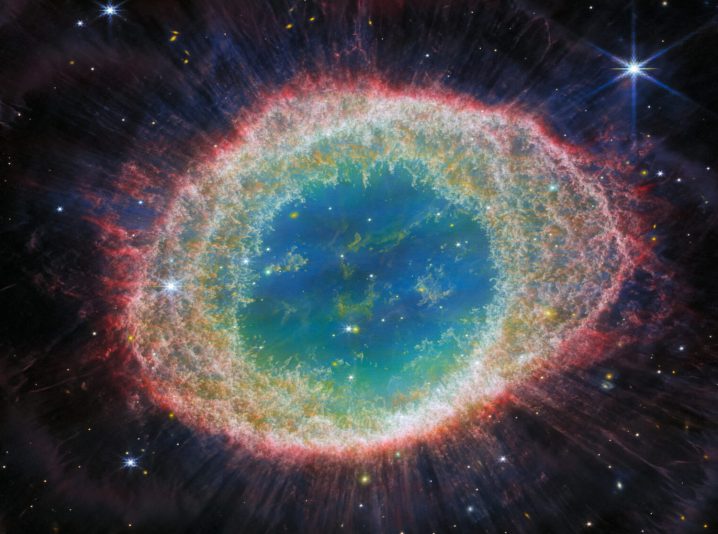The James Webb Space Telescope has just served up a couple more sublime images, this time showing the Ring Nebula in astonishing detail.
First spotted in the 18th Century and located around 2,500 light-years from Earth, the Ring Nebula’s colorful main ring is made up of gas thrown off by a dying star at the center of the nebula.
This star will eventually become a white dwarf — a very small, dense, and hot core that marks the final evolutionary stage for a star, and one that our own sun will eventually follow, the European Space Agency (ESA) explains on its website.
Webb captured the images using two different cameras. The first one (below) was taken by its near-infrared camera (NIRCam) and shows the intricate details of the filament structure of the inner ring.

The second image (below) used Webb’s mid-infrared instrument (MIRI) to reveal particular details in the concentric features in the outer parts of the nebulae’s ring.

The Ring Nebula, which ESA describes as being shaped like a “distorted donut,” contains around 20,000 dense globules that are rich in molecular hydrogen. In contrast, the inner region is an area of very hot gas.
“The main shell contains a thin ring of enhanced emission from carbon-based molecules known as polycyclic aromatic hydrocarbons,” ESA said. “Roughly 10 concentric arcs are located just beyond the outer edge of the main ring. The arcs are thought to originate from the interaction of the central star with a low-mass companion orbiting at a distance comparable to that between the Earth and the dwarf planet Pluto. In this way, nebulae like the Ring Nebula reveal a kind of astronomical archaeology, as astronomers study the nebula to learn about the star that created it.”
ESA notes that while the middle of the donut may appear to be empty, in reality it’s full of lower density material that stretches both towards and away from us, “creating a shape similar to a rugby ball slotted into the donut’s central gap.”
The Webb telescope is located about a million miles from Earth and recently celebrated its first year of operations.
NASA, the European Space Agency, and the Canadian Space Agency have worked together on the $10 billion endeavor, building and deploying the world’s most powerful space telescope in a quest to make groundbreaking discoveries about the origins of the universe while at the same time searching for faraway planets that could support life.
Editors’ Recommendations
Services Marketplace – Listings, Bookings & Reviews